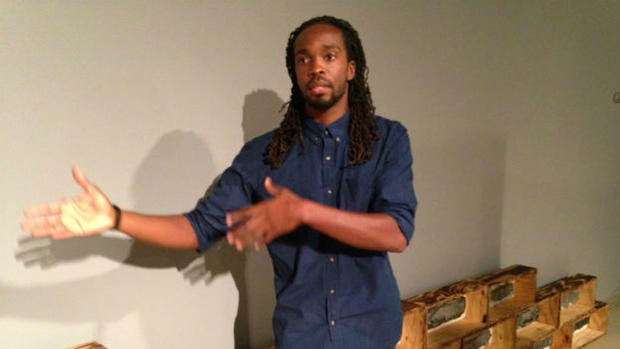Slave Trade, Sweatshops Compared In New Exhibit At African American Museum of Philadelphia
By Cherri Gregg
PHILADELPHIA (CBS) -- The African American Museum of Philadelphia opened a new exhibit this week that makes a haunting comparison between the Trans-Atlantic slave trade and modern day sweatshops.
Titled, "Cash Crop," the exhibit is inspired by a diagram of the Brooks slave ship-- a symbol of the Trans-Atlantic trade that depicts images of human bodies crammed inside the hull of a ship. Artist and exhibit creator Stephen Hayes says seeing the diagram evoked imagery of third world sweatshops.
"People are packed inside these sweatshops with just enough space to produce as much goods as they possibly can so they can ship them to us here in America," he says, "the show is about who or what is the next cash crop."
With pieces with titles like, "Gluttony" and "Tradition," the theme of the Brooks slave ship carries throughout the exhibition with hand-crafted sculptures carved in wood, forged with steel, molded with cement and weaved into fabric using crochet techniques. But the show is not about slavery. It's about consumerism. And the Savannah College of Art and Design graduate says he spent long hours each day for weeks at a time creating each piece so that his process of creating also paralleled the thankless toil workers endure in sweatshops across the world.
"I put myself in a whole other mode-- so I could produce as much as could as they would in a sweat shop," says Hayes.
The signature piece, "Cash Crop," includes 15 life-size cement sculptures of human forms that are chained to a pallet etched with a symbol of America. There's one for each of the million men, women and children who endured the middle passage.
"I hope when the public walks through, they get an eye to eye connection or they might see the features on each person's face and think they might know this person," says Hayes, "I want chained them to the pallet because I wanted to show that people were viewed as goods, as commodities-- like consumer products are viewed today."
The exhibit runs through January.
Check Out These Other Stories:




